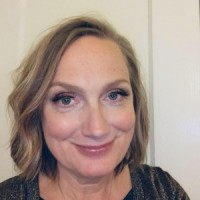Hampton Carson and His Scientific Network
My first collection to process at the American Philosophical Society is the Hampton L. Carson Papers. A pioneering geneticist and evolutionary biologist, Carson worked with the genus Drosophila, or fruit flies, for nearly 50 years. Drosophila is an ideal candidate for research, given the insects’ short life span, which enable scientists to track several generations over the course of their careers. Numerous breakthroughs have resulted from Drosophila research, which have had a great impact on our understanding of genetics (notably human), since we share approximately 70% of our DNA with fruit flies.
While many have worked in the Drosophila community, Carson was one of the few scientists who studied Drosophila in the wild, particularly in Hawaii, which provided a unique opportunity to observe variations in the species across the islands. He was also part of a generation that came into their own in the 1930s and 1940s, who took an active role in shaping the field of modern genetics, and outlined parameters for research as DNA was cooperatively mapped by laboratories throughout the world.

As I developed a processing plan for the Carson papers, I was fortunate to attend the Scholarly Networks Symposium at the APS in June. Given this backdrop – and that Carson seemed to be well established in his field – it piqued my curiosity on how he related to his community in the mid-to-late 20th century. Given my previous research, I’ve been interested in how people navigate their professional spheres, especially when information sharing and ethics come into play.
As I sorted Carson’s voluminous correspondence, his command of genetics research was quite evident. I was impressed by his expertise and how much he got right, especially in the era before online research and e-resources. While Carson seems to have been an avid reader of scientific literature, I confirmed that his impressive knowledge was also due – in no small part – to his extensive connections with fellow scientists. His correspondence has an unusual depth and breadth, which provides a detailed snapshot of the genetics community from that time period.

In the course of processing, I became familiar with his mentors (such as Theodosius Dobzhansky), mentees (Alan Templeton and Val Giddings), and rival (Francisco Ayala). To his credit, Carson was very supportive of female colleagues and treated them as equals. For instance, he advocated for increased pay for Jane Ahearn at the University of Hawaii. His letters to and from Lee Ehrman, Henretta Trent Band, and Francisca “Chica” do Vol were as extensive, detailed, and forthcoming as any addressed to his male counterparts. Given her scientific background, his partner Meredith Carson was frequently involved in his research and operated in a capacity much greater than a faculty wife. She often accompanied “Hamp” on collecting trips and they attended conferences together. Letters from professional colleagues are frequently addressed to both of the Carsons, or at least refer to Meredith as a central figure in his life.
Despite the collegiality I witnessed in his correspondence, Carson could be quite pointed in his criticism, especially when editing scientific papers, if he suspected someone was sloppy in their scholarship. I think this was due to his dedication to good scientific methodology. I saw several colleagues being taken to task for not knowing the genetics literature better, making assumptions without good data to back it up, and not being aware of similar research going on, especially when they strayed into another scientist’s territory.

Aside from the occasional barbed comment, there are several ways that Carson participated in his network, such as serving with numerous professional organizations, in addition to the universities (Washington University and the University of Hawaii at Manoa) at which he worked. These included the National Academy of Science, the American Academy of Arts and Sciences, and the Genetics Society of America, among others. For more details on Carson’s vast connections to the field of genetics, stay tuned for another blog post!


